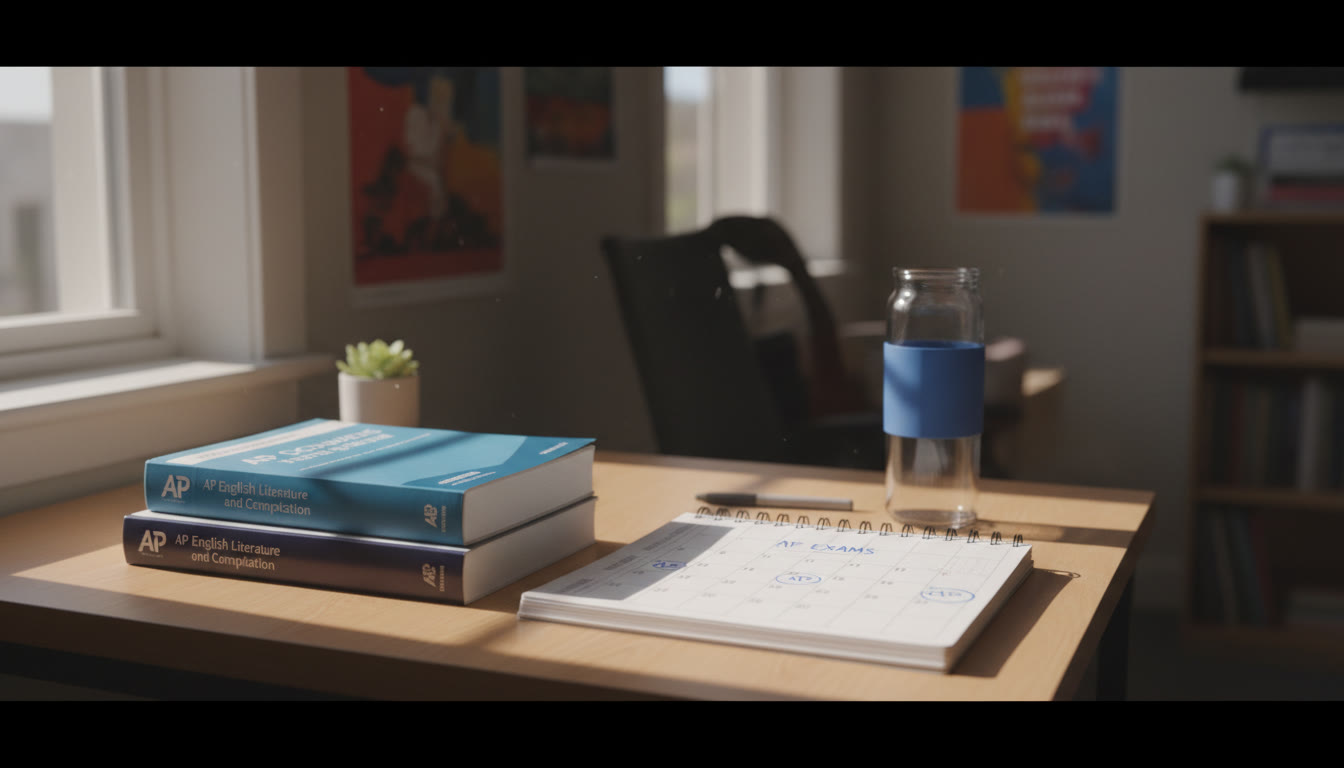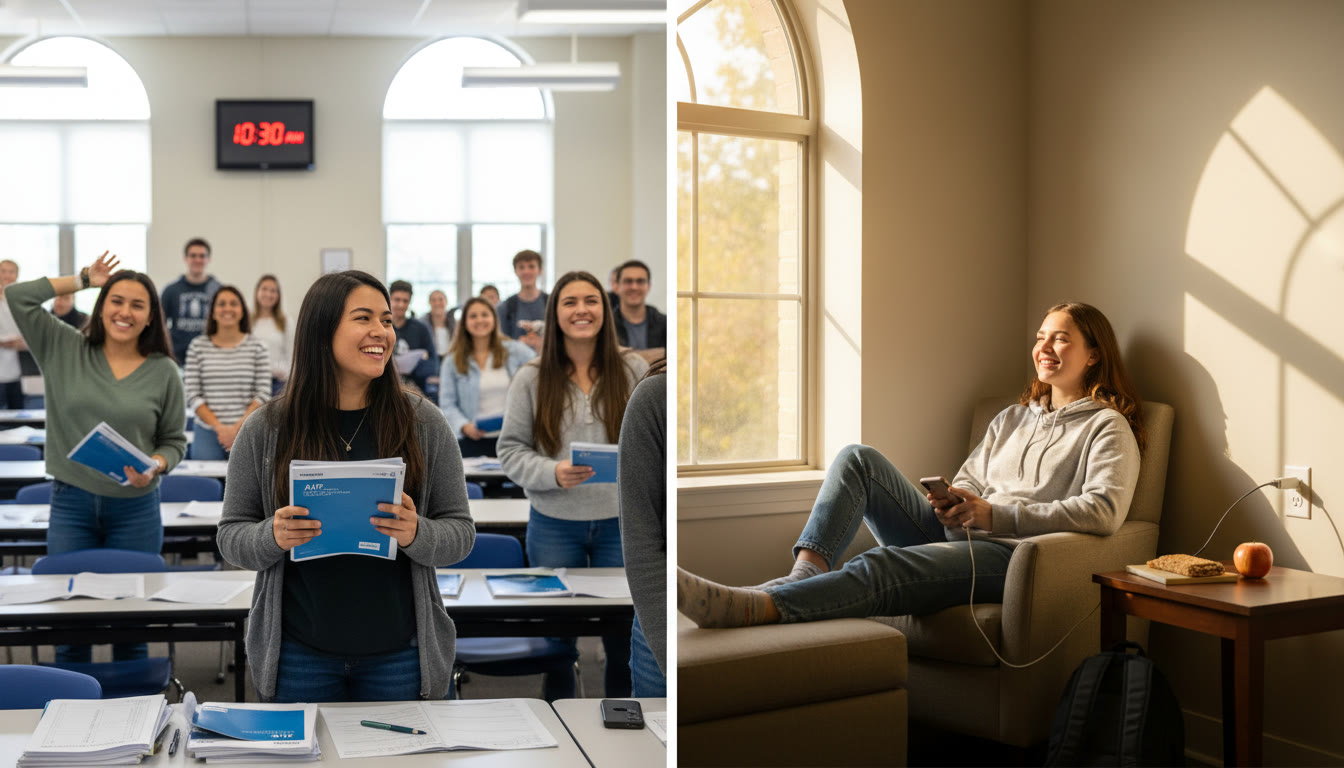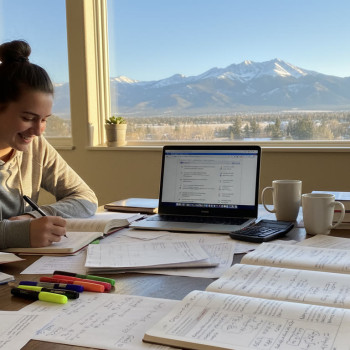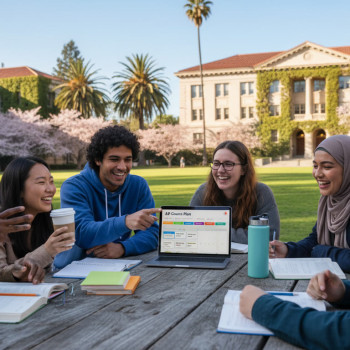Why an “Exam Collision” Happens and Why It’s Manageable
It’s a weird little rite of passage for ambitious students: two AP exams scheduled back-to-back on the same day. Maybe you’re taking AP Calculus AB at 8 a.m. and AP Psychology in the afternoon, or you’re tackling two digital exams that eat up the daylight hours. First, breathe. This situation is not rare, it’s not hopeless, and with a plan you can leave both rooms feeling proud.
College Board schedules exams across fixed windows in May, and sometimes subjects overlap. The official option is late testing for one exam — and that’s a perfectly good solution — but plenty of students prefer to take both on one day. When they do, success comes down to preparation, logistics, and smart recovery between tests.

Who Makes the Rules (and What They Mean for You)
Understand the basics so you can plan without surprises. AP exams must be taken at their scheduled times unless you arrange late testing with your AP coordinator. If you’re registered for two exams scheduled at the same time, your school will flag the conflict and you can request one exam be moved to late testing.
If you choose to take both exams on the same regular testing day, your school and the College Board expect you to follow all exam security and administration rules — arrive on time, use permitted devices (for digital exams), and stick to the proctor’s instructions. Violations can invalidate a score, so being organized and careful isn’t just helpful — it’s essential.
Before Exam Day: The Three-Week Collision Prep Plan
Start three weeks out and treat this like a mini project: schedule, prioritize, and practice. The goal is to enter exam day with clarity about content, a physical plan for the day, and mental strategies to switch gears between tests.
Week-by-Week Breakdown
- Week 3: Diagnostic and Priorities — Take a full-length practice test for each AP to identify weak areas. Map out which topics absolutely must be reviewed and which can be skimmed.
- Week 2: Targeted Practice — Build focused practice sessions around the high-yield topics you flagged. Mix active recall (flashcards, quick quizzes) with one timed practice section for each exam to simulate fatigue.
- Week 1: Timing and Strategy — Practice transitions: morning routine, mid-day recharge, and afternoon focus. Run a simulated day where you do a morning timed section, take a realistic break, then do an afternoon timed section.
Study Blocks That Actually Work
When you combine two AP subjects into a single week, shorter high-intensity blocks beat marathon sessions. Use 50–60 minute focused blocks followed by 10–15 minute breaks. Rotate subjects so your brain practices switching contexts — this reduces the cognitive cost of changing topics on test day.
- Morning block (60 minutes): Deep content — problem sets or written prompts.
- Midday block (45 minutes): Active recall — flashcards, short essays, or quick multiple-choice sets.
- Evening block (30–45 minutes): Light review — summaries, cheat-sheet creation, or concept maps.
Logistics: How to Make the Day Run Like Clockwork
Logistics are often the difference between a jittery mess and a calm, controlled day. Here’s what to lock down ahead of time.
Confirm Your Schedule and Venue
Talk to your AP coordinator weeks ahead to confirm start times, room assignments, and any special arrangements. If one of your exams is digital, ask about device charging options, proctor plans, and whether you’re allowed to plug in between exams. If you take two digital exams on the same device, make sure you can charge between sessions or have a backup device.
Packing List for Exam Day
- Photo ID (if required by your school)
- Approved calculator, pencils, pens, erasers
- Fully charged laptop/tablet and charger or external battery for digital exams
- Comfortable layers (rooms can be chilly or warm)
- Healthy snacks and easy-to-digest lunch (you may only have a short break)
- Water and any permitted medication
- Printed quick-sheets or condensed notes (for last-minute review before the exam room, if allowed to review)
Charging and Device Strategy for Digital Double-Downs
If you’re taking two digital AP exams, the College Board advises that schools make sure devices can last or be charged between sessions. If you’re relying on a single device, plan for charging time or request a second device from your coordinator. A high-capacity power bank is a great backup — test it to make sure your device charges properly between sessions.
On the Morning of the Exam: Energy, Focus, and Warm-Ups
Morning rituals set the tone. Your aim is to be calm, alert, and confident before the first bell.
Pre-Exam Checklist
- Eat a balanced breakfast: protein, complex carbs, and a little fruit. Avoid heavy, greasy food.
- Hydrate — but not so much that you’re interrupting exam time for bathroom breaks.
- Do a 10-minute light warm-up: a few practice problems or a quick review of formula sheets to activate your brain.
- Check your bag: ID, supplies, device, charger, snack.
Last-Minute Mindset Hacks
Use breathing exercises or a two-minute visualization before you enter the exam to reduce adrenaline. Remind yourself: you’ve prepared, and you have a plan. Confidence is a skill you can practice — run through a short pep talk: “I’m ready. I’ll manage time. I can switch gears.”
Between Exams: Recharge Without Losing Momentum
This is the pivotal window. How you use this break determines how fresh you’ll be for the second test.
The 4-Step Midday Recharge Plan
- Refuel Quickly (15–20 minutes) — Eat a light, carb-plus-protein snack like a banana with peanut butter or a small turkey sandwich. Avoid heavy foods or large amounts of sugar that cause crashes.
- Hydrate and Move (5–10 minutes) — Walk for 5–8 minutes to increase blood flow. Movement clears the fog and reduces test-related tension.
- Micro-Review (10–15 minutes) — Do a focused, low-stress review: one-page cheat sheet, 5 flashcards, or one short practice prompt. The goal is activation, not mastery.
- Reset (5 minutes) — Do a breathing exercise, stretch, and visualize succeeding in the next exam.
What to Avoid Between Tests
- Don’t cram entire chapters — that increases anxiety.
- Avoid heavy or greasy meals that make you sleepy.
- Stay away from social media or exam-question discussions that might derail your focus.
Time Management and Strategy During Each Exam
Different APs require different approaches. Below is a quick grid that helps you decide how to spend time on multiple-choice, free-response, and essay sections depending on the subject.
| Exam Section | Primary Strategy | When Time Is Tight |
|---|---|---|
| Multiple Choice (MCQ) | Answer easy questions first, mark and return to hard ones. | Use elimination, guess intelligently; avoid spending >1.5x average time on a question. |
| Short Free Response | Outline briefly, write a focused answer with evidence. | Write concise answers with clear topic sentences and one strong example. |
| Long Essays/FRQs | Create a quick outline, allocate time to intro, body, conclusion. | Write a tight thesis and two solid evidence paragraphs rather than a sprawling attempt. |
| Lab/Problem Solving (STEM) | Label steps clearly, show work, check units and reasonableness. | Prioritize method and answer clarity; partial credit is valuable. |
Dealing with Fatigue, Stress, and Unexpected Hiccups
Real life happens — fire alarms, stomach bugs, a proctor issue. Know the policies and who to alert (your AP coordinator or proctor) immediately. For personal fatigue, use quick cognitive resets: a one-minute walking break (if permitted), breathing, or a small protein snack. Avoid overthinking mistakes; once a section is closed, focus on the next one.
When to Consider Late Testing
Late testing is not failure — it’s a strategic choice. Consider moving one exam to late testing if:
- You have a documented accommodation that makes two same-day exams impractical.
- One exam conflicts in time and you cannot secure a device or charging solution.
- Your emotional or physical health suggests you cannot safely perform twice in one day.
Talk to your AP coordinator early — they’ll help you request late testing.
How Tutoring and Targeted Support Can Make the Difference
When two APs collide, targeted preparation matters more than ever. One-on-one tutoring helps you prioritize what to study, develop exam-specific strategies, and practice time management under realistic conditions. Personalized tutors can design a study plan that recognizes the collision and treats both exams as a single combined project.
Sparkl’s personalized tutoring offers 1-on-1 guidance, tailored study plans, and expert tutors who can simulate exam transitions and trouble-shoot day-of logistics. The added benefit of AI-driven insights helps identify weak spots quickly so your last three weeks of prep are high-impact and stress-light. If you’re juggling two APs, a targeted few sessions with a tutor can dramatically improve efficiency and confidence.
Real Student Example: How Two Exams Turned Into Two Wins
Meet Maya (scenario recreated for clarity). She had AP United States History at 8 a.m. and AP Statistics at 1 p.m. Her plan:
- Three weeks out: weekly full-length practice for U.S. History and two timed statistics sections per week.
- Devices: arranged a charging station and a backup tablet through her coordinator.
- Day plan: light breakfast, 10-minute warm-up on key dates, after the morning test she ate a controlled snack, walked for 8 minutes, and did five quick stats flashcards.
She used a tutor for two sessions focused on evidence-rich essay structures and statistics inference problems. Test day felt busy but controlled — she finished both exams with time to spare and no meltdown. The targeted help before the exams made switching subjects feel natural instead of jarring.
Post-Exam: Reflect, Rest, and Plan for Next Steps
After you leave the second exam room, give yourself a recovery period. Don’t scour social media for exam questions or debate content with classmates — posting or sharing unreleased exam content risks score cancellation. Instead, rest, celebrate surviving the marathon, and reflect on what went well and what you’d do differently next time.
Score Reporting and What Comes Next
AP scores are typically released in July. If you took a late-test exam, your score timeline may differ slightly. Keep track of score release dates and any college credit policies you care about. If a grade matters for placement or credit, check your college’s policy now so you can make informed decisions when results arrive.
Checklist: Your Exam Collision Survival Kit
- Confirm times and rooms with AP coordinator one week before.
- Pack two chargers (device charger + power bank) and backup materials.
- Practice at least one simulated double-exam day before the real thing.
- Have a short, tested snack plan and sleep strategy.
- Use targeted tutoring sessions to shore up weak areas and rehearse transitions.
- Know how to request late testing if circumstances change.

Final Thoughts: You’re More Prepared Than You Think
Two AP exams in one day is a challenge, not a catastrophe. The secret is to treat it as an orchestrated day: prepare the content, rehearse the logistics, and plan the recovery. Small choices — a practiced 10-minute warm-up, a charged device, a smart snack — compound into big advantages when you’re tired and under pressure.
If you want to maximize efficiency, consider targeted support. A few tutoring sessions focusing on exam strategy, time management, and the exact types of questions you’ll face can shift your comfort level dramatically. Sparkl’s personalized tutoring — with 1-on-1 guidance, tailored study plans, expert tutors, and AI-informed insights — can be the nudge that helps you move from stressed to steady.
Take the day one step at a time. Plan, execute, recharge, and finish strong. When you walk out of that second exam room, you’ll be the student who didn’t just survive an exam collision — you navigated it with strategy and calm. That’s the kind of skill colleges notice, and more importantly, it’s the kind of skill you’ll use again and again.
Quick Reference: What to Do If Something Goes Wrong
- Device issue during a digital exam: Alert the proctor immediately; request a backup or charging time if allowed.
- Sudden illness: Notify a proctor and your AP coordinator — medical documentation may be required for late testing or make-up considerations.
- Scheduling mistake: Contact your AP coordinator as soon as possible to discuss switching one exam to late testing.
Want Help Building a Collision Plan?
If the idea of coordinating two APs feels overwhelming, start small: make a one-week plan, schedule one tutoring session focused on high-yield topics, and confirm logistical details with your coordinator. Small, practical steps compound quickly. And if you’d like individualized study planning, consider reaching out for personalized tutoring to build a plan that fits both of your exams and your life.
Good luck — you’ve got this. Two APs on one day is a challenge, but it’s also an opportunity to practice resilience, strategy, and calm under pressure. Those are the skills that last long after the scores come in.
























No Comments
Leave a comment Cancel